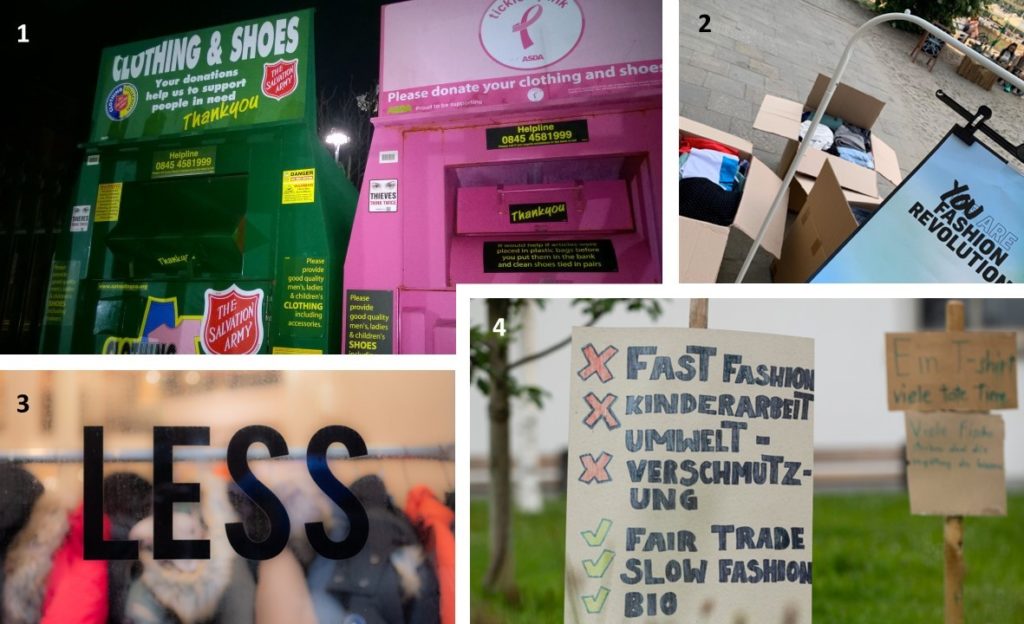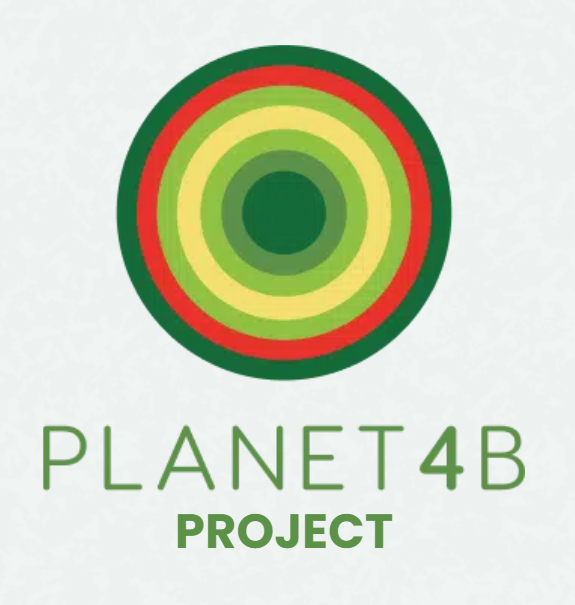
Biodiversity Prioritisation in Textile, Apparel, and Fashion: a short Introduction
Written by Pedro Navarro Gambín
The conservation and regeneration of ‘biological diversity’ or ‘biodiversity’ [1] has become a policy priority in the last years. Social, private, and governmental awareness has raised after the publication of the first Intergovernmental Global Assessment Report on Biodiversity and Ecosystem Services (IPBES 2019) and the abundant scientific evidence highlighting biodiversity loss as a critical planetary boundary far surpassed as a result of human action. This trend has been reinforced by a widespread recognition that human societies and economic systems completely rely upon biodiversity through the provision of essential ecosystem services such as primary production of raw materials or climate change mitigation (Dasgupta 2021). As a proof of this recognition, the COP 15 Global Biodiversity Conference held in Montreal in December 2022 ended with the signing of the Kunming-Montreal Global Biodiversity Framework, a pioneer intergovernmental agreement on biodiversity which sets measurable goals and targets; monitoring, reporting, and review arrangements; and allocates a funding package (Convention on Biological Diversity 2022). The EU’s Biodiversity Strategy for 2030, including the recent proposal for a Nature Restoration Law, follows a similar path (European Commission 2020). These strategies partially divert from traditional nature conservation policies (e.g., EU’s Natura 2000 protected areas) to target biodiversity-damaging practices such as pesticide use, water pollution, or commercially driven deforestation. Furthermore, awareness has also raised in some of the most biodiversity-dependent economic sectors, i.e., resource and energy intensive, which must be targeted by public policy and develop their own strategies for biodiversity prioritisation. The textile, apparel, and fashion (TAF) industries are a clear example.

Textile, apparel, fashion, and biodiversity loss
The negative impact of TAF industries on biodiversity is caused by means of four main dynamics.
- Through changes in land and water use due to the production of raw materials, e.g., cotton, viscose, wool, rubber, or leather. Intensive pesticide and insecticide use, monocultures, and excessive water use have an enormous impact on biodiversity.
- Through pollution. TAF industries account for 20% of global water pollution, which causes changes in the ecosystems by means of the acidification and eutrophication of water surfaces (Granskog et al. 2020).
- Through climate change. Rising global temperatures and the increase in the intensity and frequency of storms, fires, or droughts destroys and strongly modifies many habitats. TAF industries were the fourth largest CO2 emitter sector in 2016, with 8.1% of global GEGs emissions (Quantis 2018).
- Through overexploitation of biological resources and alien species. Deforestation and the proliferation of species used for textile production have a negative impact on biodiversity.
Moreover, TAF’s contribution to biodiversity loss is concentrated in three supply chain stages: primary production, processing, and products’ life end:
- Primary production. Each raw material used for textile production has different impacts. Cotton farming is very water intensive, i.e., 1 kg of cotton requires 10,000-20,000 litres of water to be produced (Shepherd 2019), and insecticide and pesticide intensive, i.e., it approximately accounts for 2.5% of global cropland and 24% of global insecticide use (Drew and Yehounme 2017). This results in the contamination of the surrounding soils and water surfaces, the destruction of beneficial insect populations, and the reduction of soil microorganisms (Mahmood et al. 2016). Cattle farming for leather production and tree logging for cellulosic fabric production, e.g., viscose, are important drivers of deforestation and soil degradation (Häkansson 2022). Moreover, the production of synthetic fibres such as nylon is very energy-intensive, therefore highly contributes to climate change (Granskog et al. 2020).
- Processing. Most of the water pollution caused by TAF industries occurs in this stage. Textile treatment and dyeing, i.e., the application of dyes or pigments on textile materials, overexploits freshwater resources and contaminates waterways through chemical runoff (Islam, Perry, and Gill 2020). Many of those chemicals are highly toxic and non-biodegradable, which has adverse impacts on all forms of life (Khattab, Abdelrahman, and Rehan 2020). Moreover, the leather tanning process also causes ground and water pollution (Granskog et al. 2020). Most industrial textile processing techniques are highly energy intensive.
- Product use and end of life. This stage mainly contributes to pollution and climate change, i.e., through overproduction. In the EU-27 and Switzerland, approximately 15 kg of gross textile waste per person are generated every year, 85% of which corresponds to individual waste, while only 12-15% of textile is recycled (McKinsey & Company 2022). Nearly 73% of textile ends up incinerated or in landfills, which releases pollutants and adversely impacts the surrounding biodiversity (Granskog et al. 2020). Moreover, clothes made with synthetic fibres release microplastic during their lifetime, e.g., through machine washing, which poison marine wildlife. It has been estimated that 35% of primary microplastics in the oceans originate from synthetic textiles (Boucher and Friot 2017).

Transformations towards sustainable fashion and biodiversity: the PLANET4B project
The environmental impacts of TAF industries’ global supply chains, along with the necessary transformations towards ‘sustainable fashion’, have been widely studied in the academic literature, business reports, and civil society publications (Islam, Perry, and Gill 2020; Moran, Eichelmann, and Buggy 2021; McKinsey & Company 2022; Quantis 2018). Some approaches have focused on the production side and propose the implementation of sustainable practices in the supply chain, e.g., organic cotton production, reducing synthetic fibres usage; shifting from toxic chemicals towards bio-degradable ones; improving the marketing of sustainable clothing, etc. A more systemic approach advocates for a paradigm shift from a ‘fast fashion’ model to a ‘slow fashion’ one, which would imply a reduction in the fashion production levels, the proliferation of practices such as cloth exchange or rent; a shift from linear to circular fashion supply chains, etc. (Domingos, Vale, and Faria 2022). Moreover, a big portion of the literature dove into consumers’ perception about sustainable fashion, factors influencing sustainable fashion purchasing, etc. (Moran, Eichelmann, and Buggy 2021; Domingos, Vale, and Faria 2022). However, the specifics of biodiversity prioritisation in TAF industries are completely unexplored in the academic literature and have just been recently addressed by the private sector, e.g., the Fashion Pact, and civil society, e.g., Textile Exchange.
Furthermore, the necessary arrangements to govern transformations towards biodiversity prioritisation and sustainable fashion are difficult to design and implement. Public policy can help by proposing legislation, e.g., due diligence or environmental standards, but the complexity of TAF supply chains and the multiplicity of the existing environmental impacts make the participation of different actors, i.e., consumers, designers, manufacturers, producers, policymakers; completely necessary. Tackling biodiversity loss requires understanding how the different values, norms, and behaviours towards biodiversity are entangled with how decision making within civil society, business and public policy takes place. Recognising this need, the recently launched PLANET4B project aims to provide this understanding by targeting behavioural change while employing a systemic analysis to identify how certain systems need to transform to unlock those behavioural changes. Pisa Agricultural Economics (PAGE) will contribute to this project by focusing on Tuscany’s fashion sector as a case study. By doing so, we expect to contribute to the debate about transformative change towards biodiversity prioritisation in the TAF industries to go beyond the approaches that put the pressure either on production practices or quality-driven consumption choices. A more integrated approach is necessary, one that engages with behavioural change from different perspectives and scales, e.g., individual and institutional, place and sector-based; local, regional, and EU level; etc. Hopefully, by taking this research challenge we will be able to provide targeted recommendations for transformational pathways for biodiversity prioritisation and, therefore, make a small contribution towards a more sustainable world.
References
Boucher, Julien, and Damien Friot. 2017. ‘Primary Microplastics in the Oceans: A Global Evaluation of Sources’. International Union for Conservation of Nature (IUCN).
Convention on Biological Diversity. 2022. Decision Adopted by the Conference of the Parties to the Convention on Biological Diversity. Kunming-Montreal Global Biodiversity Framework (version 1).
Dasgupta, Partha. 2021. The Economics of Biodiversity: The Dasgupta Review. Abridged Version. London: HM Treasury.
Domingos, Mariana, Vera Teixeira Vale, and Silvia Faria. 2022. ‘Slow Fashion Consumer Behavior: A Literature Review’. Sustainability 14 (5): 2860.
Drew, Deborah, and Genevieve Yehounme. 2017. ‘The Apparel Industry’s Environmental Impact in 6 Graphics’. World Resources Institute. 7 May 2017.
European Commission. 2020. Communication from the Commission to the European Parliament, the Council, The European Economic and Social Committee and the Committee of the Regions. EU Biodiversity Strategy for 2030 Bringing Nature Back into Our Lives.
Granskog, Anna, Franck Laizet, Miriam Lobis, and Corinne Sawers. 2020. ‘Biodiversity: The next Frontier in Sustainable Fashion’. Mckinsey. 23 July 2020.
Häkansson, Emma. 2022. ‘How the Fashion Industry Contributes to Deforestation’. Sustainably Chic. 29 January 2022.
IPBES. 2019. ‘Summary for Policymakers of the Global Assessment Report on Biodiversity and Ecosystem Services’. Bonn: Intergovernmental Science-Policy Platform on Biodiversity and Ecosystem Services (IPBES).
Islam, Md Mazedul, Patsy Perry, and Simeon Gill. 2020. ‘Mapping Environmentally Sustainable Practices in Textiles, Apparel and Fashion Industries: A Systematic Literature Review’. Journal of Fashion Marketing and Management: An International Journal 25 (2): 331–53.
Khattab, Tawfik A., Meram S. Abdelrahman, and Mohamed Rehan. 2020. ‘Textile Dyeing Industry: Environmental Impacts and Remediation’. Environmental Science and Pollution Research 27 (4): 3803–18.
Mahmood, Isra, Sameen Ruqia Imadi, Kanwal Shazadi, Alvina Gul, and Khalid Rehman Hakeem. 2016. ‘Effects of Pesticides on Environment’. In Plant, Soil and Microbes: Volume 1: Implications in Crop Science, edited by Khalid Rehman Hakeem, Mohd Sayeed Akhtar, and Siti Nor Akmar Abdullah, 253–69. Cham: Springer International Publishing.
McKinsey & Company. 2022. ‘Scaling Textile Recycling in Europe-Turning Waste into Value’. McKinsey Apparel, Fashion & Luxury Group.
Moran, C. A., E. Eichelmann, and C. J. Buggy. 2021. ‘The Challenge of “Depeche Mode” in the Fashion Industry – Does the Industry Have the Capacity to Become Sustainable through Circular Economic Principles, a Scoping Review’. Sustainable Environment 7 (1): 1–16.
Quantis. 2018. ‘Measuring Fashion. Environmental Impact of the Global Apparel and Footwear Industries Study’. Quantis.
Shepherd, Hattie. 2019. ‘Thirsty for Fashion? How Organic Cotton Delivers in a Water-Stressed World’. Soil Association.
[1] IPBES defines biodiversity as “the variability among living organisms from all sources including terrestrial, marine, and other aquatic ecosystems and the ecological complexes of which they are a part. This includes variation in genetic, phenotypic, phylogenetic, and functional attributes, as well as changes in abundance and distribution over time and space within and among species, biological communities, and ecosystems”.


